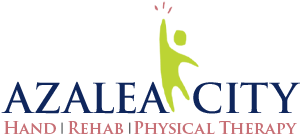Bone Fracture Recovery In Mobile AL

Breaking a bone is never fun. Whether you've had a nasty fall or took an awkward step, bone fractures in Mobile AL are a painful reality that many of us will face at some point in life. But what exactly is a bone fracture, and how can physical therapy/occupational therapy help you recover faster? Let's dive into everything you need to know about bone fractures, from the causes and types to how they're diagnosed and treated, so you can heal and get back to your normal routine in no time.
What Is a Bone Fracture In Mobile AL?
A bone fracture is exactly what it sounds like-a break in the bone. But don't think of it as just snapping in two. Bone fractures can range from tiny cracks to full-on breaks that completely separate the bone. In simple terms, a fracture happens when more force is applied to the bone than it can handle.
Bones are incredibly strong, but they have their limits. And when they're pushed beyond those limits, they can crack or break. The severity of a fracture depends on the amount of force, the angle of impact, and even the strength of the bone itself.
But fractures aren't all the same, and they can happen in different ways, which leads us to our next question-what causes bone fractures?
What Can Cause Bone Fractures In Mobile AL?
Bones are tough, but they're not invincible. Several factors can lead to a bone fracture, whether it's a dramatic event or something that develops over time. Understanding the causes is key to preventing fractures from happening in the first place.
- Trauma or injury: The most common cause of bone fractures is trauma, which includes accidents like car crashes, falls, or sports injuries. When the body experiences a sudden, strong impact, bones can break under the pressure.
- Overuse or repetitive motion: Bones can also fracture from overuse. These are called stress fractures, and they're often caused by repetitive motions in activities like running, dancing, or jumping. Unlike trauma-related fractures, stress fractures develop gradually over time.
- Osteoporosis: This condition weakens bones, making them more likely to fracture. With osteoporosis, even a minor bump or fall that wouldn't normally cause harm can lead to a fracture. It's especially common in older adults, whose bones become more brittle with age.
- Underlying health conditions: Certain medical conditions, like osteomalacia (softening of the bones) or bone cancer, can weaken bones and make them more susceptible to fractures.
While the cause of a fracture can vary, it's crucial to understand the different types, as this can affect treatment and recovery time.
Types of Bone Fractures
Not all fractures are created equal. Depending on how the bone breaks, you might hear terms like "simple" or "compound" fracture. Here's a breakdown of the most common types:
- Simple (or closed) fracture: In this type, the bone breaks but doesn't pierce through the skin. It's a cleaner break and usually easier to treat.
- Compound (or open) fracture: A more severe fracture where the broken bone pierces through the skin. Compound fractures are not only painful but also risk infection, requiring immediate medical attention.
- Greenstick fracture: This type of fracture is common in children, whose bones are more flexible than adults'. Instead of breaking completely, the bone bends and cracks on one side.
- Comminuted fracture: This is when the bone shatters into multiple pieces. These fractures usually result from high-impact trauma and are more complicated to treat.
- Stress fracture: A tiny crack in the bone, typically caused by repetitive forces, like running or jumping. Stress fractures are common in athletes and those who engage in high-impact activities.
- Transverse fracture: This is a straight, horizontal break across the bone. These fractures often happen when the bone is struck from a direct angle.
- Spiral fracture: A twisting force causes this type of fracture, where the break spirals around the bone, commonly seen in sports injuries or accidents.
Knowing the type of fracture is important for determining how long recovery will take and the best course of treatment.
How Is a Bone Fracture Diagnosed?
If you suspect you've fractured a bone, it's essential to seek medical attention right away. But how do healthcare professionals figure out if you've got a break, and what kind of break it is?
Here's the step-by-step process of diagnosing a bone fracture:
- Physical examination: A doctor or physical therapist will first assess the injured area. They'll look for obvious signs like swelling, bruising, or deformity. You might be asked to move the area (if possible) to determine how severe the injury is.
- Medical history: If you've had previous fractures, conditions like osteoporosis, or engage in repetitive motions (like running), your healthcare provider will take these factors into account.
- X-rays: This is the most common way to diagnose a fracture. X-rays provide a clear image of the bone and can show whether there's a break, how severe it is, and the type of fracture.
- MRI or CT scan: In cases where the fracture is small (like a stress fracture) or if soft tissue damage is suspected, an MRI or CT scan may be needed. These scans give a more detailed look at the bones and surrounding tissues.
Once a fracture is diagnosed, the next step is healing-and that's where physical therapy/occupational therapy plays a vital role.
How Physical Therapy/Occupational Therapy Helps People with Bone Fractures
Physical therapy/occupational therapy is an essential part of recovering from a bone fracture. After all, it's not just about letting the bone heal; it's about getting your strength, mobility, and function back to where it was before the injury-or even better.
Here's how physical therapy/occupational therapy helps people with bone fractures:
- Restoring mobility: After a fracture, you might have limited mobility in the affected area, especially if you've had to wear a cast or brace. Physical therapy/occupational therapy helps you gradually regain range of motion through targeted exercises and stretches.
- Strengthening muscles: When you've been inactive due to a fracture, the muscles around the injury can weaken. Physical therapists will guide you through exercises to build back muscle strength, which supports the bone and helps prevent future injuries.
- Preventing stiffness: Being in a cast or brace can cause joints and muscles to stiffen. Physical therapy/occupational therapy keeps these areas flexible, preventing stiffness from setting in.
- Improving balance and coordination: After a fracture, especially in the legs or feet, your balance might be off. Therapists work on exercises that improve coordination and balance, helping you walk and move more confidently.
- Pain management: Physical therapy/occupational therapy includes techniques like manual therapy, massage, and sometimes even ultrasound or electrical stimulation to help manage pain and promote healing.
- Customized recovery plan: Every fracture is different, and so is the recovery process. A physical therapist creates a personalized plan that fits your needs, focusing on specific exercises and activities that help you recover faster and more effectively.
What Should You Do if You Suspect You Have a Bone Fracture?
If you think you've fractured a bone, time is of the essence. Here's what you should do:
- Don't ignore the pain: Pain is your body's way of telling you something is wrong. If you have sharp pain, swelling, or difficulty moving the area, it's time to take it seriously.
- Rest and immobilize: If possible, avoid moving the injured area and try to keep it still. Use a splint or makeshift support if necessary to prevent further damage until you can see a healthcare professional.
- Ice the area: Applying ice can help reduce swelling and numb the pain. Wrap the ice in a cloth to avoid direct contact with the skin, and apply it for 15-20 minutes every few hours.
- Seek medical attention: Don't try to diagnose a fracture yourself. Head to a doctor, urgent care, or emergency room to get proper evaluation and treatment.
- Follow your physical therapy/occupational therapy plan: Once diagnosed and treated, stick to your physical therapy/occupational therapy plan to ensure a full and effective recovery. Physical therapy/occupational therapy will help you regain strength, mobility, and function while preventing future complications.
Break Free from Bone Fractures with Physical Therapy/Occupational Therapy
Bone fractures in Mobile AL can be a painful setback, but they don't have to stop you in your tracks for long. With the right diagnosis, treatment, and physical therapy/occupational therapy, you can bounce back from a fracture and regain full strength and mobility. Remember, healing is a process, and physical therapy/occupational therapy plays a key role in speeding it up and making sure you recover properly.
If you suspect you've fractured a bone, don't wait-get the help you need and start your journey with Azalea City Hand and Rehab and Physical Therapy and get back to health today.
OFFICE HOURS
Monday
8:00am - 5:00pm
Tuesday
8:00am - 5:00pm
Wednesday
8:00am - 5:00pm
Thursday
8:00am - 5:00pm
Friday
8:00am - 12:00pm
Saturday & Sunday
Closed
Azalea City Hand and Rehab and Physical Therapy
316 S Sage Ave Ste C
Mobile, AL 36606


